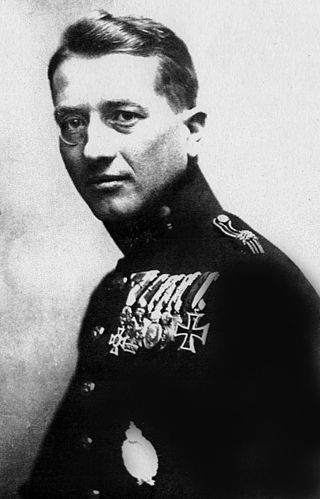
Godwin Karol Marian von Brumowsky was the most successful fighter ace of the Austro-Hungarian Air Force during World War I. He was officially credited with 35 air victories, with 8 others unconfirmed because they fell behind Allied lines. Just before the war ended, Brumowski rose to command of all his country's fighter aviation fighting Italy on the Isonzo front.
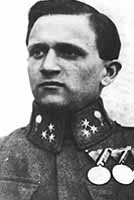
FeldwebelJulius Busa was an Austro-Hungarian World War I flying ace credited with five aerial victories during 1916. He was also notable for twice surviving direct hits by antiaircraft shells, saving his aircraft and aerial observer on both occasions. Busa scored all his aerial victories while engaged in general purpose missions in two-seater reconnaissance airplanes. His valor would be rewarded with Austria-Hungary's highest award for non-commissioned officers, the Gold Medal for Bravery. He also won three Silver Medals for Bravery—two First Class and one Second Class. Busa was killed in action by Francesco Baracca on 13 May 1917.

Friedrich Hefty, also referred to as Frigyes Hefty, was a World War I Austro-Hungarian flying ace credited with five confirmed and five unconfirmed aerial victories. His early interest in aviation led him to drop out of school in 1913 and become a glider pilot. When World War I began, he served first as an aerial observer, then as a pilot. He scored his first aerial victory as an observer, on 7 October 1915. Once he became a pilot, he claimed nine other victories, four of which were verified. On 22 August 1918, he became one of the first combat pilots to bail out using a parachute. Hefty ended the war with ten awards of the Medal for Bravery.

Offizier Franz Lahner (1893-1966) was a Austro-Hungarian World War I flying ace credited with five aerial victories. Later in life, he was a lumber merchant and an officer at the Luftwaffe.

Lieutenant Alois Rodlauer (1897-1975) was a Austro-Hungarian World War I flying ace credited with five aerial victories. Originally a valorous infantry officer in 1915, 1916 and 1917, he turned to aviation in mid-1917. After pilot training, he managed to score five aerial victories between March and October 1918, despite two spells in hospital. Rodlauer returned to civilian life postwar, but returned to serve in the Luftwaffe from 1939 to 1945. He died a natural death in 1975. In 1983, aviation historians pieced together Rodlauer's combat record and realized he was an ace.
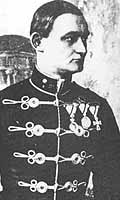
OberleutnantRudolf Szepessy-Sokoll Freiherr von Negyes et Reno was a Hungarian World War I flying ace credited with five aerial victories. He began his military career as a cavalryman as the war began in 1914. After winning the Silver Medal for Bravery and being promoted into the officers' ranks, he transferred to the Austro-Hungarian Aviation Troops in mid-1915 as an aerial observer. On 14 February 1916, while participating in a historic strategic bombing raid on Milan, he scored his first aerial victory. After shooting down another airplane and an observation balloon, Szepessy-Sokoll was transferred to a fighter unit after pilot training. After shooting down a pair of Macchi L.3s on 5 November 1917, he was killed in action the next day.

FeldwebelAndreas Dombrowski was an Austro-Hungarian World War I flying ace credited with six aerial victories scored on three different fronts. He was conscripted into the Austro-Hungarian military in 1915. Dombrowski underwent pilot's training, gaining his license in June 1916. Posted to the Russian Front during the Brusilov Offensive to fly reconnaissance, he was credited with his first victory on 17 August 1916. In September, 1916 he was transferred to the Romanian Front. Still flying a reconnaissance aircraft, he fought four more successful engagements during 1917, becoming an ace. Transferred to the Italian Front in April 1918, he flew an Albatros D.III for his former observer, Karl Patzelt. On 4 May 1918, Dombrowski scored his sixth and final victory, then took a bullet to the face and crashlanded. Once healed, he went to a photographic reconnaissance unit for the rest of the war.

Johann Frint was an Austro-Hungarian flying ace during World War I and professional soldier credited with six aerial victories while flying as an aerial observer. Crippled as an infantry officer in November 1914, Frint volunteered for the Austro-Hungarian Aviation Troops. He scored his victories on the Italian Front from the rear seat of two-seater reconnaissance aircraft with a variety of pilots, including a triple victory while being flown by his commanding officer, Heinrich Kostrba. Rewarded with the Order of the Iron Crown and Military Merit Medal, Frint became a mediocre pilot. He was entrusted with successive commands of a number of squadrons before dying in an airplane crash in 1918.
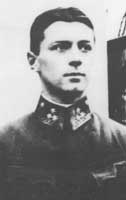
Franz Peter was an Austrian flying ace credited with six aerial victories in World War I while flying for Austria-Hungary's Imperial and Royal Aviation Troops.

Oberleutnant Josef Pürer (1894-1918) was an Austro-Hungarian World War I flying ace credited with six aerial victories. A volunteer for the artillery when the war began, he fought for two years on the Russian Front. He was commissioned as an officer on 1 January 1916; later that year he transferred to the Austro-Hungarian Aviation Troops. He served as an aerial observer in northern Italy until early 1918. After scoring six aerial victories, he was trained as a fighter pilot by 11 July 1918. He was killed in action by Sidney Cottle on 31 August 1918.

OberleutnantLudwig Hautzmayer was an Austro-Hungarian World War I flying ace credited with seven aerial victories. He was a prewar reserve infantry officer; when war broke out, he fought until suffering a severe leg wound on 8 September 1914. When recovered, he transferred to the Austro-Hungarian Aviation Troops as an aerial observer in March, 1915. After 40 combat missions on the Eastern Front, he underwent fighter pilot training. Once qualified, he was posted to the Isonzo Front, where he became an ace. Appointed commander of his own fighter squadron, Flik 61J, he was one of the few reserve officers so entrusted as a leader. After scoring two more victories, he ended the war with multiple decorations, up to the Order of Leopold. Postwar, he flew as an airline pilot for Malert until killed in a crash at Croydon, England on 9 December 1936.

OberleutnantOtto Jäger was an Austro-Hungarian World War I flying ace credited with seven aerial victories. He entered the war in 1914 as an infantry officer. By mid-1915, he had suffered three serious wounds fighting on the Russian Front, winning the Military Merit Medal, Silver Medal for Bravery, and the German War Service Medal. Invalided from front line service to training duties, Jäger trained as an aerial observer. Posted back to the Russian Front to fly with Fliegerkompanie 10 in early 1916, Jäger scored his fifth victory on 2 August 1916. He was awarded the Silver Military Merit Medal, the Military Merit Cross, and the German Iron Cross Second Class.
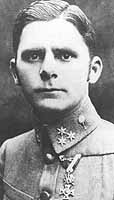
Hauptmann József von Maier, after 1922 József Modory, was an Austro-Hungarian World War I flying ace credited with seven aerial victories.

OberleutnantAlexander Tahy was a Hungarian World War I flying ace credited with eight aerial victories while serving with the Austro-Hungarian Aviation Troops. He began the war as an artilleryman, winning the Silver Medal for Bravery in May 1915. In early 1916, he transferred to aviation duty as an aerial observer. Between 3 December 1916 and 26 June 1917, he was credited with five aerial victories for Fliegerkompanie 19, earning another three decorations. Having taught himself to fly, he transferred to a fighter unit, Fliegerkompanie 51J for his last three victories. On 7 March 1918, Tahy died in a flying accident. His greatest honor came after his death, when he was awarded the Knight's Cross of the Order of Leopold with War Decorations and Swords.

Károly Kaszala was an Austro-Hungarian World War I flying ace credited with eight aerial victories, thus winning his nation's highest honor, the Gold Medal for Bravery. Joining the military in 1914, he volunteered for aviation duty after recruit training. After pilot's training, he was posted to Fliegerkompanie 14, where he refused to fly his assigned aircraft. He was transferred for his insubordination; as he gained experience in his new unit, he and his observers managed to score three aerial victories from his reconnaissance two-seater. He was then upgraded to single-seat fighters, winning four more victories by the end of 1917. He was then posted to test pilot duties until war's end. In addition to the Gold Medal for Bravery, he had won three Silver Medals for Bravery and a German Iron Cross.
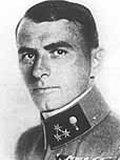
Oberst Adolf Heyrowsky, was a career officer in the Austro-Hungarian military who turned to aviation. He became an accredited flying ace during World War I, with twelve aerial victories scored despite the fact he was a reconnaissance pilot instead of flying fighters. The units he flew in and commanded had long range recon and ground attacks as their primary mission.
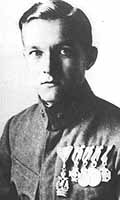
Oberleutnant Franz Rudorfer (1897-1919) was an Austro-Hungarian World War I flying ace credited with eleven confirmed and two unconfirmed aerial victories.

Oberleutnant Ernst Strohschneider was an Austro-Hungarian flying ace during World War I. He was credited with 15 confirmed aerial victories during his rise to the simultaneous command of two fighter squadrons. He died in a flying accident on 21 March 1918.
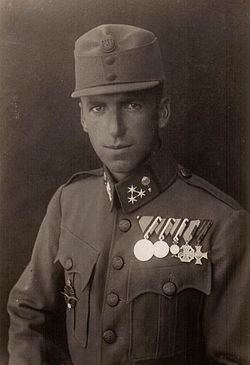
Feldwebel Stefan Fejes was an Austro-Hungarian flying ace credited with 16 confirmed and 4 unconfirmed aerial victories during World War I. By war's end, he had not only received numerous decorations, he had been personally promoted by his emperor.
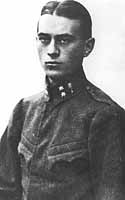
Stabsfeldwebel Ferdinand Udvardy was a Hungarian conscript into the military of the Austro-Hungarian Empire who became a flying ace credited with nine aerial victories. Upon the dissolution of Austria-Hungary, Udvardy became a Hungarian citizen, and in the aftermath of World War I, defended his new nation against invasion.




















